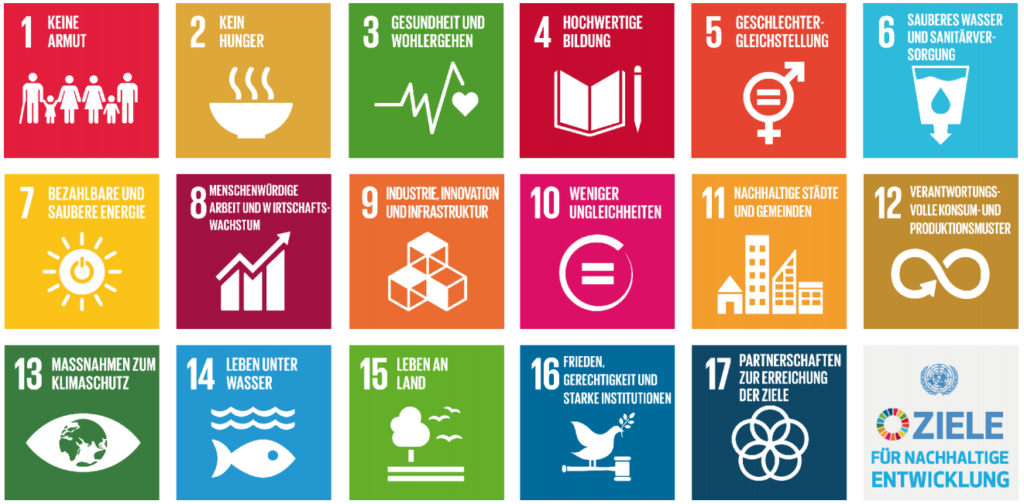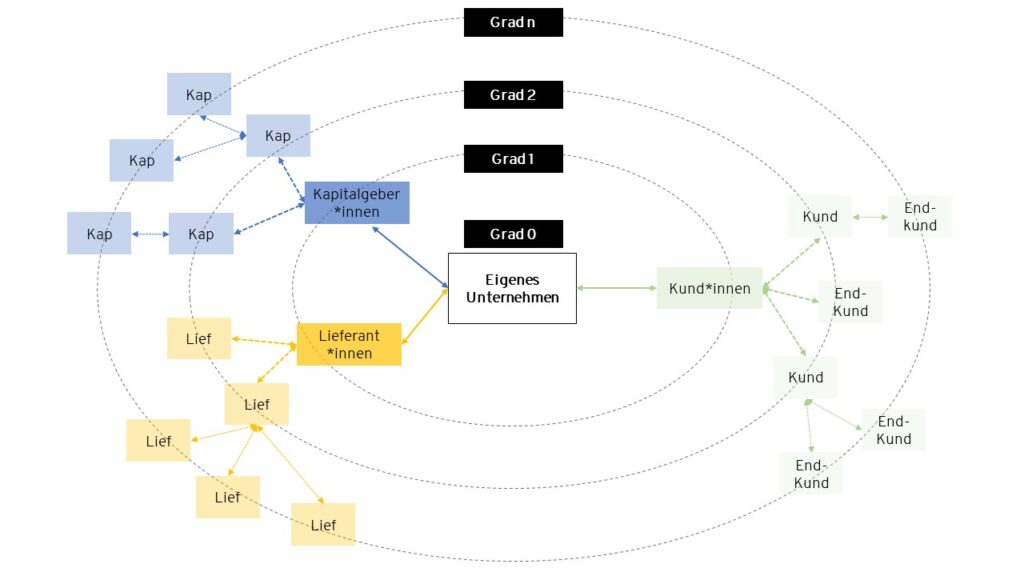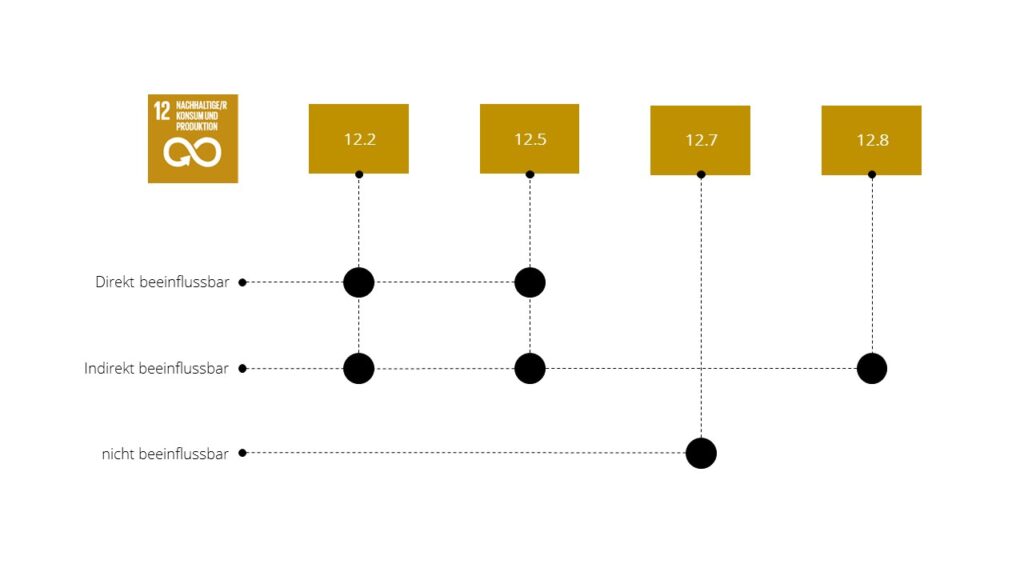Materiality describes for companies what their impact on society and the environment is - and vice versa. Once you have recognised your materiality, you can develop a strategy and measures based on this in order to act sustainably. In this article, we therefore provide examples of how to use the Sustainable Development Goals (SDGs) of the United Nations in order to become aware of their own materiality.
Contents
- Use of the SDGs for the materiality analysis
- 1 - Clustering the SDG sub-goals for your own company
- 2 - Determine the materiality of the SDGs that can be directly influenced
- 3 - Materiality of SDGs that can be indirectly influenced
- Simplified access to the use of the SDGs for materiality
Use of the Sustainable Development Goals for the materiality analysis
The UN Sustainable Development Goals represent a multilateral agreement between a large number of states and civil society actors to define goals for a global sustainable development, Sustainable development represent. They are divided into 17 main destinations, which have achieved international fame with their colourful tiling.

Each main objective is concretised with the help of sub-objectives. In total there are 169 Specifying targets. The sub-goals are not specifically formulated for use in corporate strategies. Nevertheless, various goals provide a very good orientation for determining the key factors influencing companies' sustainable development. In the following sections, we present some steps that help to identify the key sub-goals. We focus primarily on the inside-out perspective - goals that can be promoted or thwarted by corporate activities.
Step 1 - Clustering the SDG sub-goals to suit your own company
When aligning the influencing factors and materiality with the SDGs, companies must not stop at the names of the main goals. Even if the evaluation and clustering of 169 sub-goals sounds like a mammoth task - it is worth it.
The most important points for step 1 at a glance:
- Identification of the direct, indirect and non-influenceable 169 SDG targets
- Subdivision of the value creation network into degree levels (direct and indirect business relationship)
Differentiate between SDG sub-goals that can be directly and indirectly influenced
In this first step, all sub-goals are differentiated according to whether the company's activities influence the goals. We also consider whether the influence is direct or indirect. We recommend assuming direct influence if the company's own business activities have or can have a positive or negative effect on the objective. An indirect relationship exists if the influence is possible via the company's value creation network. In this case, the value creation network is at least the Stakeholders first degree, which belong to the following groups: Suppliers, customers and investors. However, depending on the complexity of the value chains, the company's resources (personnel, capital, etc.) and existing databases, every company should aim to go into as much depth as possible. The following diagram shows that the stakeholders in the grade 1 category are those with whom a direct business relationship exists. There is only an indirect relationship with all subsequent grades.

Sub-targets that can be indirectly influenced are also those where the company can influence the achievement of the target through social or political commitment.
Result of step 1: Materiality based on SDG 12 - Sustainable consumption and production
Finally, step 1 results in a clustering of the sub-goals according to direct and/or indirect as well as non-influenceable sub-goals, including various additional information. The following illustration of the results is based on a fictitious company (without direct end customer contact) using the example of SDG 12 - Sustainable consumption and production. Goal 12 is divided into eleven sub-goals, four of which are used here as examples:
12.2 - By 2030, achieve the sustainable management and efficient use of natural resources.
12.5 - By 2030, significantly reduce waste generation through prevention, reduction, recycling and reuse.
12.7 - Promote sustainable practices in public procurement, in line with national policies and priorities.
12.8 - By 2030, ensure that people everywhere have relevant information and awareness of sustainable development and a way of life in harmony with nature.

Step 1 thus already provides initial findings on materiality from the SDGs. For example, only indirect influence is assumed for target 12.7 due to the lack of end customer contact. This does not mean that the company activities that influence this sub-goal are to be categorised as immaterial. If, for example, a major negative influence is exerted on the achievement of this sub-goal, the reduction/neutralisation of this influence is significant, even if the path to achieving it involves a great deal of effort.
Methods and best practice for sustainability in your mailbox

Step 2 - Determine materiality for SDGs that can be directly influenced
It is not possible to make a generalised statement as to whether an SDG sub-goal is material and has a direct positive or negative impact on the company. In order to enable a structured analysis of a company's own impact, we recommend differentiating between internal and network issues. Working time regulations for employees, for example, are an internal issue. Working conditions at a first-tier raw material supplier, on the other hand, are a network issue that can be directly influenced via purchasing conditions or negative lists. Another example from the ecological field is which raw material the company uses in its product is an internal issue. Whether the raw material is purchased from a supplier with a large or small ecological footprint, on the other hand, is a network issue.
Which directly influenceable sub-goals are essential?
These sub-goals, which are influenced negatively or positively to a particular extent, are essential. The intensity of the impact can be determined in a variety of ways. Data collection and analyses (e.g. with Scope 1 and 2 of a carbon footprint), surveys of internal stakeholders, expert interviews or workshops are suitable for internal topics.
For network topics, an initial pre-selection based on the intensity of the business relationship and the significance for the company's own business operations is useful. The consideration of network topics with suppliers from whom the primary preliminary products for the company's own product lines are sourced takes priority in the materiality assessment. The materiality analysis then works with very similar procedures as for the directly influenceable SDG sub-goals on internal topics. Data collection as part of purchasing processes, surveys of internal and external stakeholders (including NGOs and independent experts) and the organisation of workshops with a broad range of participants have proven to be very effective. The use of external rating procedures and seals should also be considered for particularly crucial value-added relationships. You can find an overview of this in our Article "Seals and certificates and other proof of sustainability in the company".
You can also find out more about conducting a materiality analysis in our Guide "Implementing materiality analyses effectively and using them strategically"
The result is not only a materiality matrix
The results of the materiality analysis can be summarised in the traditional way in a materiality matrix. For larger companies and complex business models, however, we recommend preparing two materiality matrices: one matrix on internal topics and one on network topics, each with a link between the topic and the relevant SDG sub-goals.
Step 3 - Materiality of SDGs and sub-goals that can be indirectly influenced
To repeat - indirect, influenceable SDG sub-goals are those that:
- ... can be influenced via the value creation network, but not via the company's own business activities. An example of this is the selection of sub-suppliers of a first-tier supplier. The so-called 2nd degree suppliers.
- ... can be influenced through social or political engagement. For example, supporting educational programmes on sustainable consumption would be an indirect way of influencing SDG 12 - Consumption and production.
Which SDGs that can be indirectly influenced are material?
For topics that can be influenced via the value creation network, the procedure for network topics in the area of the SDG sub-goals that can be directly influenced can also be used as a guide.
We recommend stakeholder surveys for the materiality assessment of SDG sub-goals on social and political engagement - these should involve many groups with which there are no direct business relationships. These include, for example, NGOs or experts in political advocacy. On the other hand, stakeholder dialogues serve as an alternative to surveys. Their thematic structure and the issues to be addressed can be derived from the results of the materiality analyses on internal, network and indirect value creation topics. Further information on the structure of dialogue formats based on materiality analyses can be found in our Article "Using the materiality analysis for stakeholder dialogue".
Simplified start to take the SDGs for materiality as orientation
Not every company has the capacity to consider all SDG sub-goals in detail and to analyse its own direct and indirect impact on the achievement of the goals. We would therefore like to take this opportunity to point out a few ways to simplify the application of the three steps:
- Limitation of the stakeholders considered: Only consider the 1st degree stakeholders with whom a certain intensity in the business relationship is associated - frequency, sales or cost relevance, amount of business shares, etc.
- Starting with part of the 17 SDGs: Narrow down the sustainability goals before taking a detailed look at the sub-goals and only include further SDGs year by year.
- Merging into one large materiality analysis: The procedure described requires a total of four materiality analyses. To simplify the process, material sustainability topics can be identified in an internal work step based on the SDG sub-goals. This results in an internal preselection of topics. The clustering according to direct and indirect influenceability remains in place. Subsequently, only a materiality analysis is carried out with a large-scale data collection and evaluation and stakeholder survey, possibly supplemented by workshops and interviews.

Would you like to strategically position your company for sustainability and position yourself for the German Sustainability Award?
Contact us - we will support you with our sound experience and concrete solutions.
Michael Jenkner
Sparring partner for sustainability transformation and resilience





[...] Answering SDG-oriented questions provides insights in order to recognise in the overall picture what the essential aspects are for the company and what (rather) insignificant aspects are. Some topics are highly relevant for the company, while there are few points of contact with others. This approach sensitises people to the possibilities for shaping the company, but also makes clear the limits of their own sphere of influence. This work can be deepened with a materiality analysis. How this is approached with the SDGs... [...]